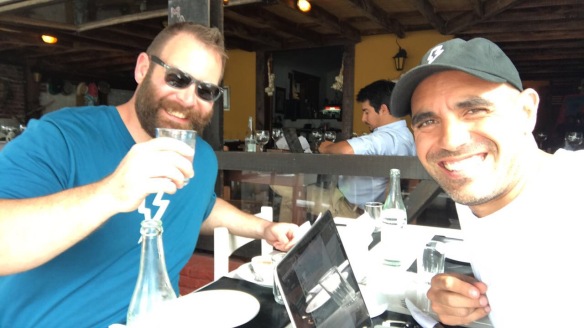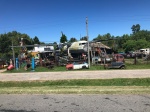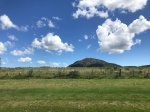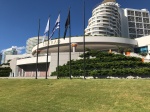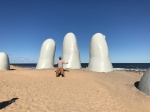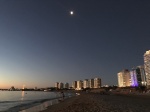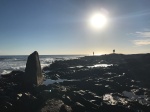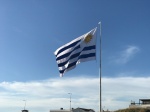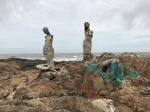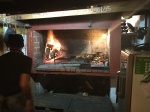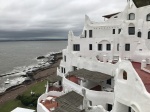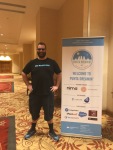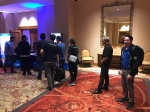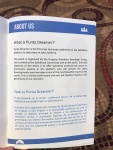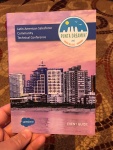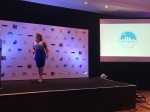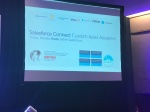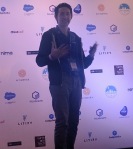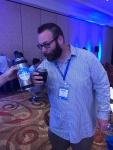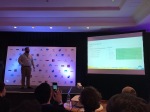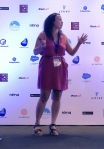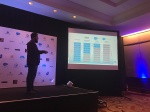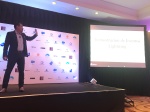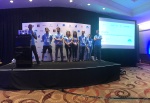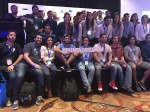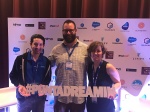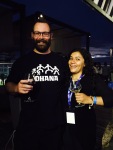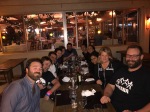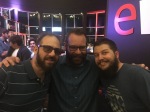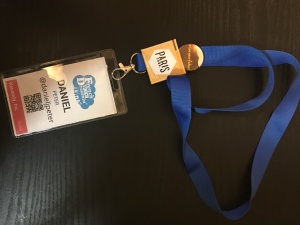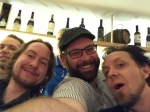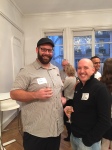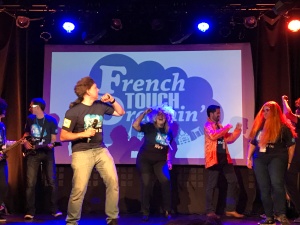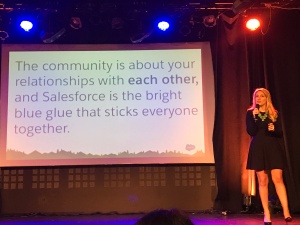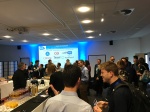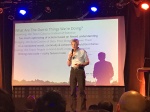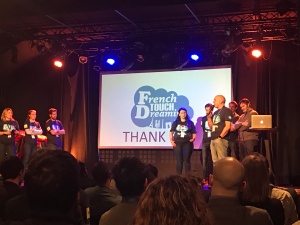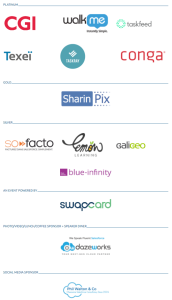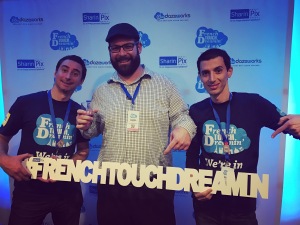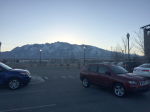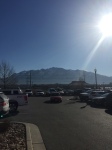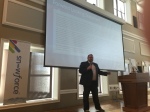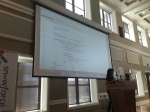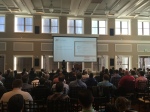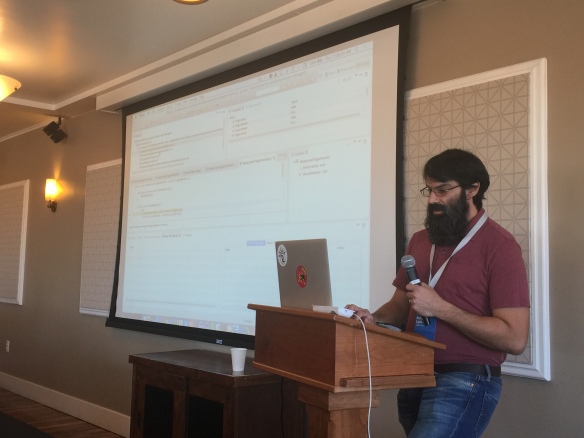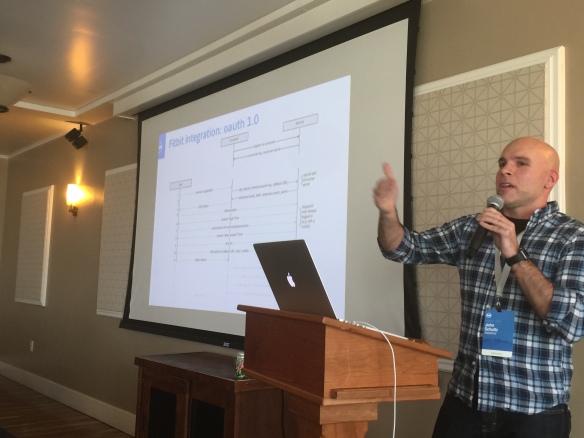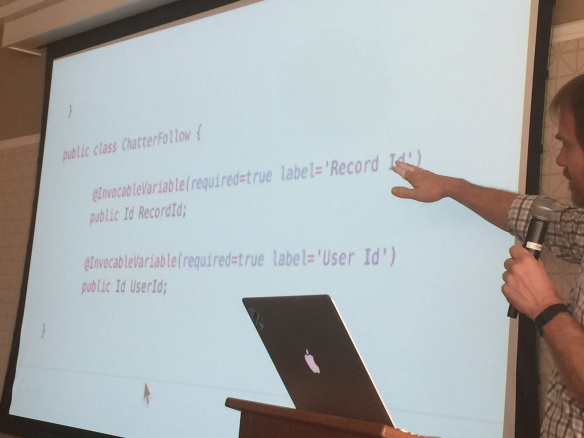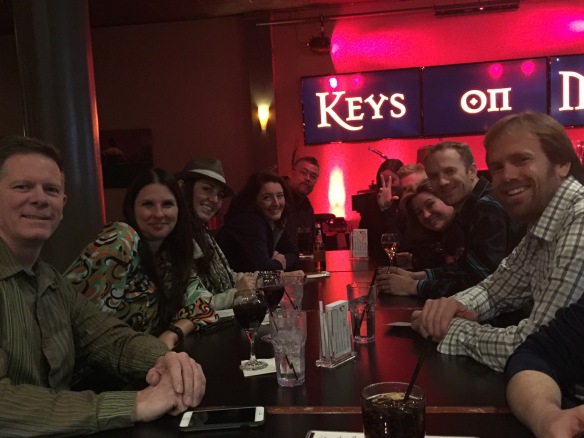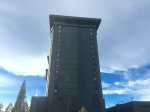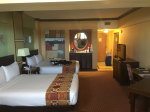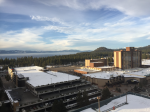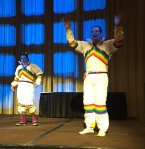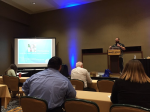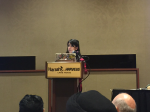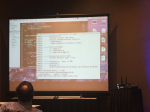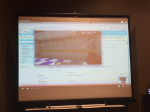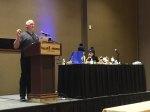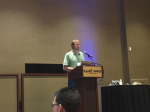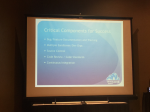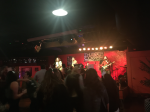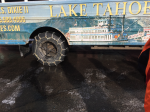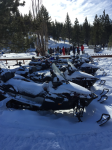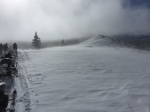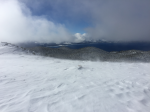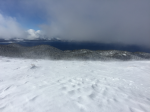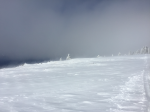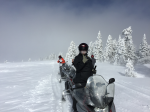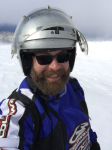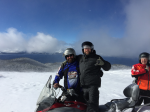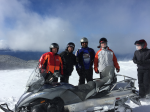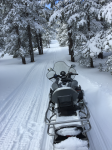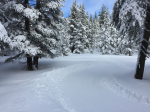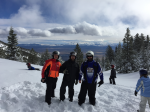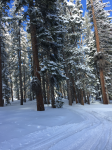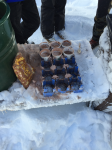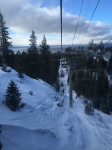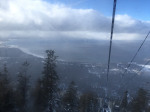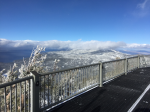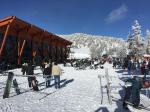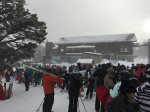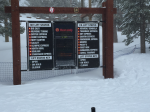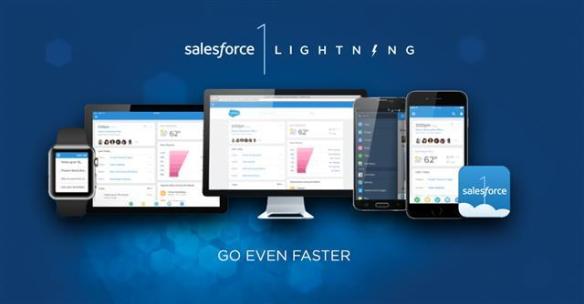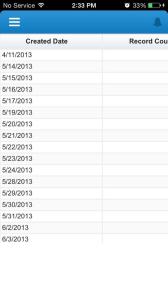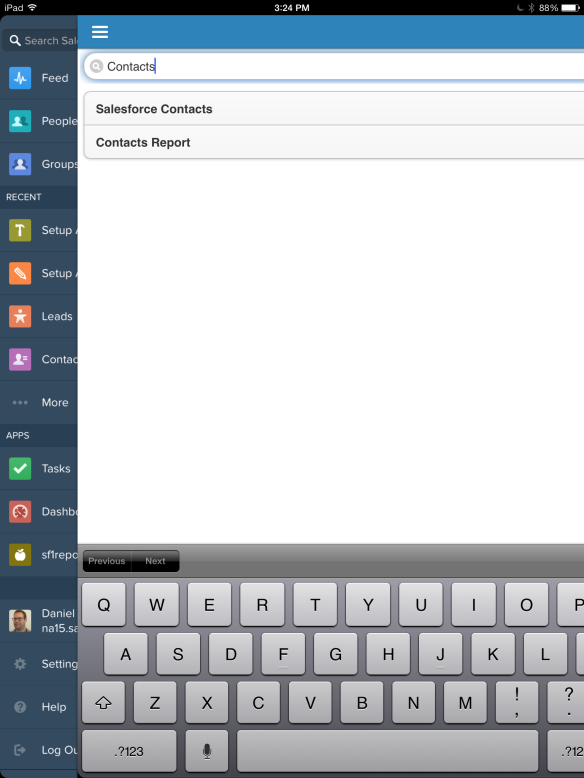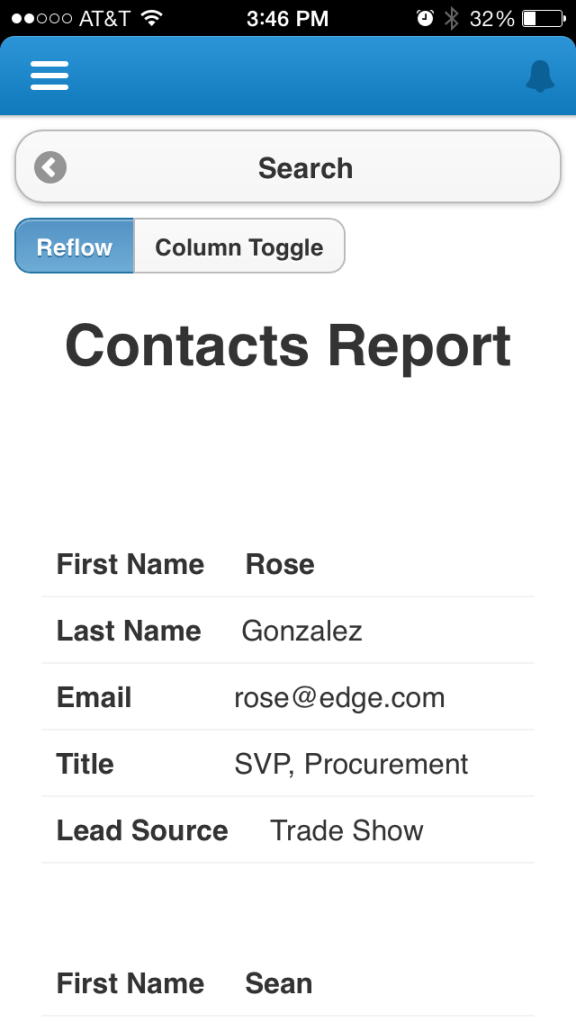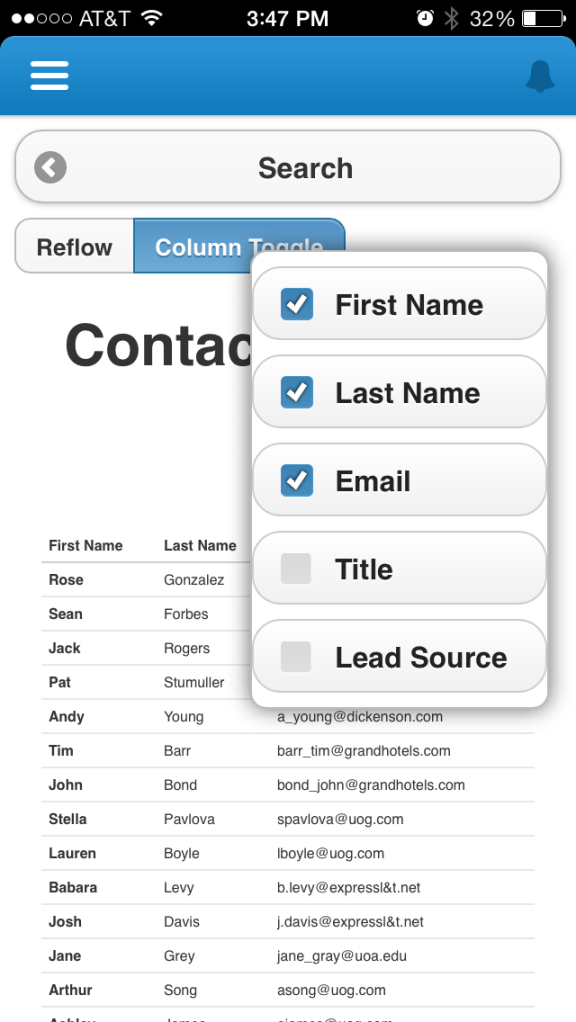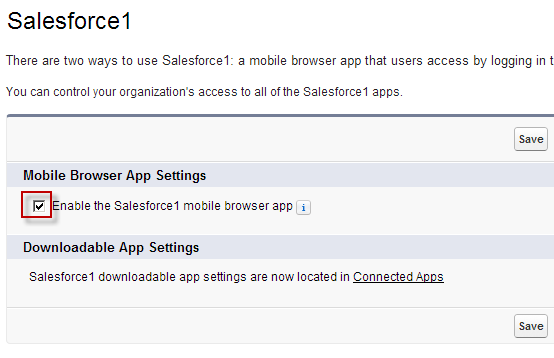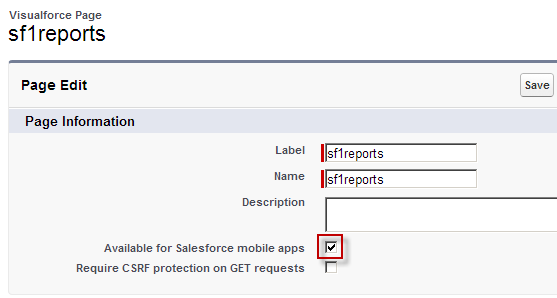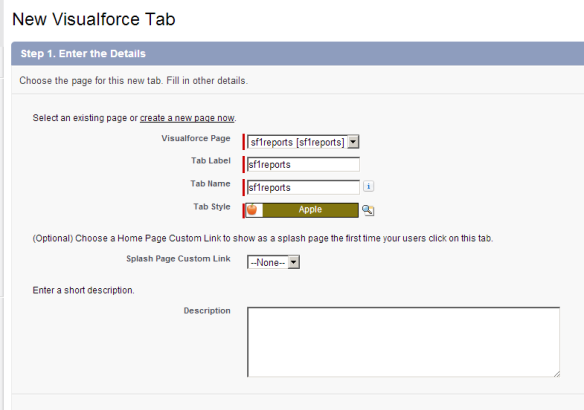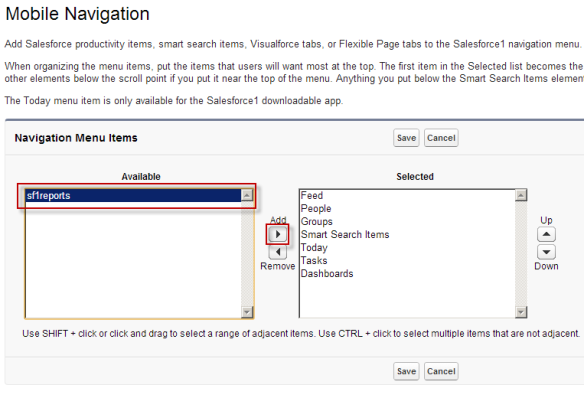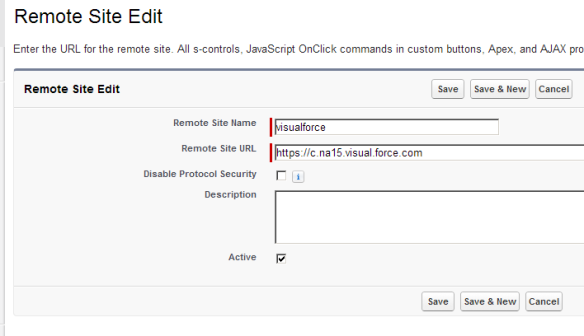TL;DR: Unbeknownst to many, there is a large, talented population of Salesforce developers in Latin America. I had the privilege of making the long voyage to Uruguay to meet many of them, get to know them a bit, learn about their beautiful country, and bring them some Salesforce knowledge of my own. It rocked! (skip to pictures at bottom)
Punta Dreamin’ – Strong Salesforce Community in Latin America’s Technology Hub
I was extremely fortunate to have the chance to speak at the first Latin American Salesforce Community Conference. Punta Dreamin’ was held in the resort city of Punta del Este, not too far from the largest city in Uruguay, Montevideo.
The event was held at the elegant Hotel Conrad, which is right across the street from the beach. This venue has all the needed amenities and plenty of room for future growth! We gathered in a common, great room where we all shared the sponsor and speaker activities of the day. There were no parallel sessions going on, just one experience. It was a FOMO-free event! (unless you weren’t there at all) As one described it, “One track in a continuous and dynamic show that integrates speakers, attendees, sponsors and the glamorous Conrad experience”.
There were a mix of Spanish and English presentations. In fact, Angela Mahoney delivered the entire opening keynote in Spanish, and English in her first language. Amazing! Punta Dreamin’ was a technical conference, aimed primarily at Salesforce Developers and Architects. This was reflected in the top notch content of the sessions, and even though my Spanish isn’t as good as it could be, I still got a lot out of the program. By paying attention to the graphics on the slides and picking up 20% or so of the words, I was able to learn from all of the sessions.
I did some walking around the town before the conference to get a feel for the local vibe. I noticed everyone drinking maté out of gourds with metal straws. This highly caffeinated tea with a distinct flavor is enjoyed all over by everyone. I think Uruguay is fueled by the stuff! Luckily several of the sponsors brought some so we could try it. This was just the ticket to get an energy boost before delivering a presentation to a packed house.
Uruguay is a wonderful country to visit. I’m a little jealous of the Salesforce developers that get to live there. Walking around and exploring revealed much of it’s charm. Rustic houses, unique works of art, tranquil beaches, tasty and satisfying Chivitos, green pastures with bright blue skies, unselfish and welcoming people, even urban city life. It’s easy to leave a piece of your heart there.
 I had several great conversations with Aldo Fernandez, who is one of the folks responsible for “dreaming” up this dreamin’ event. He described “El Maracanazo” to me, an important part of Uruguayan and Brazilian culture. This was one of the largest upsets in the history of sports where Uruguay beat Brazil 2-1 in the 1950 World Cup. This took a huge toll on Brazil. It is described as being Brazil’s version of Hiroshima, it was that bad. Yet on the flipside, it instilled a strong sense of ability to achieve amazing things within the Uruguayans. To put these countries in a US size perspective, Uruguay is smaller than the state of Washington and Brazil is almost the size of the entire United States! Punta Dreamin’ was not El Maracanazo, there was no tragic loser. However, I felt the spirit of that small country and its confidence in its ability to be a world player fueling the success of this conference.
I had several great conversations with Aldo Fernandez, who is one of the folks responsible for “dreaming” up this dreamin’ event. He described “El Maracanazo” to me, an important part of Uruguayan and Brazilian culture. This was one of the largest upsets in the history of sports where Uruguay beat Brazil 2-1 in the 1950 World Cup. This took a huge toll on Brazil. It is described as being Brazil’s version of Hiroshima, it was that bad. Yet on the flipside, it instilled a strong sense of ability to achieve amazing things within the Uruguayans. To put these countries in a US size perspective, Uruguay is smaller than the state of Washington and Brazil is almost the size of the entire United States! Punta Dreamin’ was not El Maracanazo, there was no tragic loser. However, I felt the spirit of that small country and its confidence in its ability to be a world player fueling the success of this conference.
Uruguay certainly has its share of talented software developers. It was a pleasure getting to meet some of them. They are a 7,000 mile flight away from the Bay Area, and in the Southern Hemisphere of the world. Perhaps this geographic separation has something to do with the lack of global awareness. But there is no denying they are a major exporter of “nearshoring” software and IT services for many other countries with the highest per-capita numbers for this in Latin America. Uruguay has become Latin America’s outsourcing hub, with companies like Tata Consultancy Services setting up their Spanish speaking headquarters there. There are also many tech companies headquartered in Uruguay doing their own work, and a growing startup scene as well. A country with low crime, natural beauty, smart people, and amazing technology resources. What kind of well-guarded secret is this place?
Now, the secret is out! Punta Dreamin’ was a huge step forward in making this known within the global Salesforce community.
Traveling is learning. Meeting new people is learning. Being a software developer means you can never stop learning. No matter how skilled you are, there is always more to learn. One of the great things about these conferences is the opportunity we get to cross-pollenate technical and cultural knowledge between communities. I presented a session on an open source project I’m working on called HyperBatch. One of the attendees who saw the presentation reached out to me to say, “Thank you for coming this far South to talk and inspire our thoughts about what’s actually possible”. That clinched value of me participating in this event right there.
Salesforce Culture in the Extended Ohana
Salesforce has the four core values of Trust, Growth, Innovation, and Equality. I can frame my experience as a speaker at this Latin American conference within these values.
Trust
I trusted the travel would be worth it, they trusted I would bring value to the event.
Growth
I grew personally from the experience, while attempting to grow the awareness of the Latin American Salesforce Community.
Innovation
The Punta team innovated this entire conference, it was the first of its kind. I was sharing my own innovations with the group as a speaker.
Equality
Latin America’s Salesforce professionals deserve equality of recognition and compensation. They deserve a conference, too! As a visitor to their country, I was treated with equality and felt welcomed.
Sponsors
The sponsors of this event were amazing. I didn’t get a chance to talk to all of them, but I did get to most of them. I loved talking with these folks so much, I am listing them here so you can check them out for yourself. These are world-class organizations with some of the friendliest people you could ask for. Have a look to learn more about Uruguay tech.
Additional Reading
- 9 Reasons to Pick Uruguay as Your Nearshore Service Provider (abstracta Blog by Sofia Palamarchuk)
- Why Uruguay Is the Tech Hub for Startups: The South American Standout (Article by Neon Roots)
Fotos

